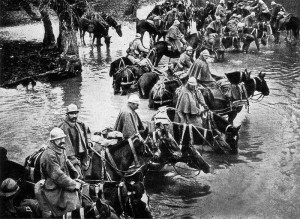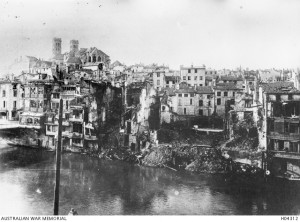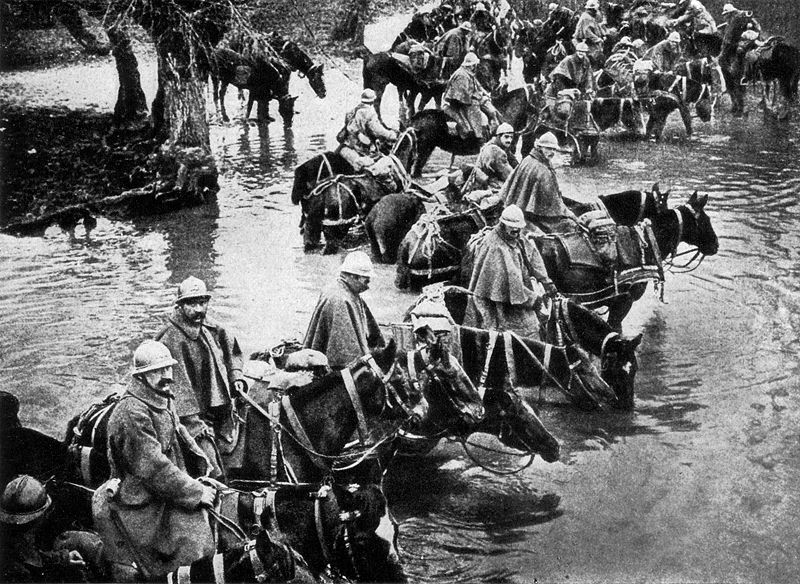
French horses resting in a river on their way to Verdun. Image courtesy National Geographic, Vol. 31 1917, p. 338.
The Battle of Verdun begins as the German 5th Army attacks the French 2nd Army north of the historic city of Verdun, following a nine-hour long artillery bombardment. Germany launches a series of sustained attacks, aiming to “bleed” the French Army white, forcing it out of the war, and compelling England to seek a compromise with Germany.
Germany initially gains territory along the east bank of the Meuse River but the offensive loses momentum as large numbers of French reinforcements are marched in. French commander, Henri-Philippe Petain, determined to save Verdun, famously pledges to Commander of the French forces, General Joseph Jacques Cesaire Joffre:
They shall not pass.
The battle settles into a stalemate, as casualties on both sides mount. Bitter fighting continues until German troops withdraw on 18 December 1916. More than a million men are killed or wounded during the ten month long Battle of Verdun, the longest conflict of the First World War. The result of the battle was a marginal French victory.
Centenary of the Battle of Verdun

A section of the war damaged city of Verdun as seen from across the Meuse River 1916. Image courtesy Australian War Memorial.

